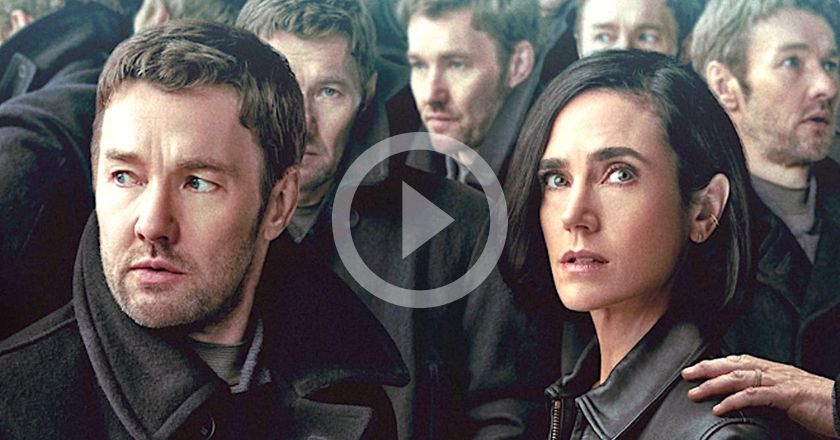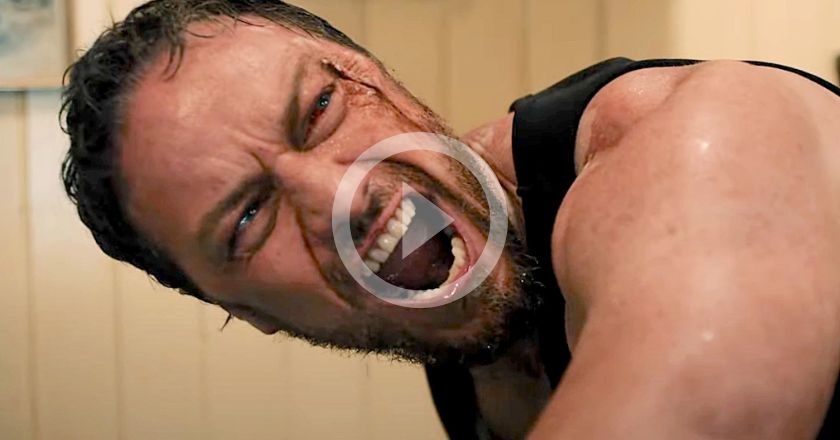
Well, it’s here: The Man Who Killed Don Quixote, a film that’s lived rent free in Terry Gilliam’s head since the late ’80s. Even if you haven’t seen the fabulous documentary, Lost in La Mancha, which followed Gilliam’s aborted attempt to make the film back in 2000, you’ll at least likely heard of the protracted journey this project has taken to the big screen. It’s a road that saw multiple close starts, two lead actors pass away, Johnny Depp chain himself to the Pirates of the Caribbean franchise never to return to the project, and most recently a legal hurdle wherein Gilliam’s own producer sued him over ownership over the very film we’re talking about now. Your heart likely goes out to the Brazil director and you wish The Man Who Killed Don Quixote to be a feat of cinematic necessity. We all did.
The final form that Gilliam has shaped his ever-changing screenplay into sees Adam Driver as Toby Grisomi, an advertising director shooting a commercial in Spain, using the novel Don Quixote as its inspiration. Toby’s a miserable man who knows he’s miserable. He despises those around him and thinks nothing of sleeping with his boss’s wife, Jacqui (Olga Kurylenko). When The Boss (Stellan SkarsgÃ¥rd) puts pressure on him to be inspired, Toby comes into contact with a bootleg copy of a student film he made back in the day, The Man Who Killed Don Quixote, which he coincidently also filmed in Spain. Hightailing it out of curiosity back to the village where he hired non-actors to be in his film, Toby finds that his actions have caused cracks in the populace.
The once teenage waitress, Angelica (Joana Ribeiro), smitten with Toby and his tales of how she’ll one day be famous, has now become a beaten and disrespected escort in Madrid, or as the film keeps problematically calling her, “a whore.” Meanwhile, Javier, an elderly cobbler (played by Jonathan Pryce), who took the lead role in Toby’s film, has gone mad and believes himself to be the actual and now immortal Don Quixote. Through a bag of reasons involving cattle prods, dead cops and Holy Week, Toby is soon on the run with Javier, with the latter believing him to be his faithful squire, Sancho.

Gilliam made several changes to his script over the years. The original premise was a fantasy where Toby travels back in time to end up at the side of Don Quixote. As derivative as that plot might have been, there’s a chance it would have felt more complete and less cobbled together than what’s been set before us. Gilliam’s narrative feels patched together from the several ideas he’s had concerning a story that never really goes anywhere, or one that he forgets about. For example, a moment of fourth wall breaking sees Toby wipe the subtitles from the screen, declaring that everyone can understand each other. Not only will nothing like this happen again, but the premise is also wiped away as Toby is later seen struggling to speak to anyone who doesn’t speak English.
That’s in the finite. A much larger issue is Gilliam’s use of dreams, unstable minds and artistic vision. Is Javier’s mental state contagious? With moments where Toby finds himself up against knights and discovering lost bags of gold? Maybe, but so what? This is the classic narrative of the man who has everything being dismantled and rebuilt from the ground up, but the wheels are constantly spinning. The film could be viewed as an opportunity for Gilliam to exorcise the demons of creativity that have plagued him so long. It would explain why it feels like he’s throwing everything at the screen in the hopes that something sticks. Whilst there are flashes of Gilliam-esque mischief to savour, it’s just too much of a mish mash to enjoy. In the pursuit of finally being able to make his movie, Gilliam appears to be have been too close to the forest to see the trees.
A curiosity at best, The Man Who Killed Don Quixote is an example of how the journey can be much more interesting than the destination.
SCREEN REALM SCORE: ★★☆☆☆
‘The Man Who Killed Don Quixote’ opens in limited Australian cinemas on April 11.







